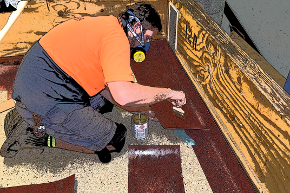Work health and safety

'Work health and safety' (WHS) is the new term for 'Occupational health and safety' (OHS). It specifically applies to states and territories that have adopted the national Work Health and Safety Act and Regulations. The remaining states are currently looking at the legislation and deciding on their proposed timetables for change.
This is the process of 'harmonisation', where all states and territories agreed in 2008 to move towards implementing a national set of WHS laws, regulations and codes of practices.
The transition process had been progressing relatively smoothly until 2012, when a couple of states decided to review their commitment to the national system managed by Safe Work Australia.

For the latest information on the harmonisation of WHS / OHS laws, go to the Safe Work Australia website.
This site provides updated timetables for the states that have not yet aligned their laws and regulations to the national 'Model' WHS Act and Regulations. There are also explanations of how the new legislation differs from the previous state-based OHS laws.
Regardless of which state or territory you work in, every jurisdiction has similar health and safety legislation which is strictly enforced. This means that all workplaces need to be diligent in developing their own safety policies and procedures to reflect these laws, and meticulous in ensuing that everyone on-site follows them.
As a workplace trainer, you have an obligation to follow all of the safety policies and procedures that apply to the site you're working at.
But in addition, you have an extra duty of care to your trainees and apprentices. This is because they are relying on you to keep them safe while they're learning new things, and they often don't know where the hazards are in a particular activity until you tell them.
Never assume that a trainee knows all of the safety precautions related to a task until you've spelt out each one and they have demonstrated that they've got the message.
It's important to remind yourself regularly that even the simplest, most commonsense trick of the trade could be completely unknown to your trainee until you've pointed it out.
Some basic WHS principles
- Always set a good example - make sure you wear all the required personal protective equipment (PPE) and follow all safe operating procedures and site policies.
- Ensure that all participants in your training session are wearing their PPE properly and understand the purpose of each item.
- Take each participant through the safe operating procedures for a task before you let them do it themselves.
- Closely monitor the participant while they're practicing a new skill until you're confident that they know what to do and what not to do, and know how to get out of trouble safely if something goes wrong.
- If an unsafe situation arises during a training session or an assessment activity, act immediately to make it safe, such as shutting down any affected machinery or removing people from the area.

